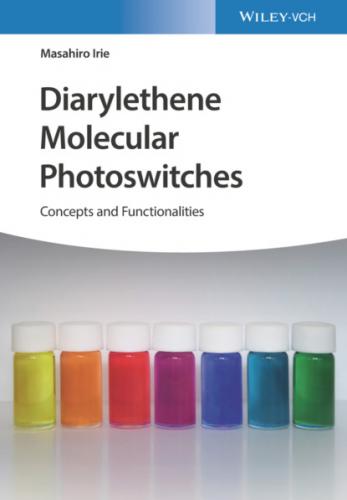Figure 1.5 Development of diarylethene molecular photoswitches.
Although diarylethene photoswitches exhibit brilliant color changes upon photoirradiation, most of them are nonfluorescent or very weakly fluorescent in both isomer forms. It was a long‐standing ambition to prepare photoswitchable fluorescent diarylethenes without attaching fluorescent chromophores to the diarylethenes. In 2011, sulfone derivatives of 1,2‐bis(2‐ethyl‐6‐aryl‐1‐benzothiophen‐3‐yl)perfluorocyclopentene were found to exhibit very strong fluorescence (fluorescence quantum yield ∼ 0.9) in the closed‐ring isomers [31]. The turn‐on mode fluorescent diarylethenes are now extensively applied to super‐resolution fluorescence microscopy in materials science and biological systems. Diarylethenes are able to switch both absorption (color) and fluorescence emission upon photoirradiation.
At first sight, the most striking phenomenon observed in molecular photoswitches is a photoinduced instantaneous color change. Figure 1.6 shows photos of the color changes of diarylethene derivatives in solution. When the toluene solutions of the derivatives are irradiated with UV light, the colorless solutions turn yellow, orange, red, violet, blue, cyan, and green. The chemical structures of the derivatives are shown below in the photos. These colors disappear upon irradiation with visible light. The photoinduced coloration/decoloration cycles upon alternate irradiation with UV and visible light can be repeated many times.
Figure 1.6 Color changes of diarylethene derivatives 1–7 in toluene upon irradiation with UV and visible light.
The color changes are ascribed to the electronic structure changes of the derivatives from the open‐ to the closed‐ring isomers. Two typical examples of the electronic structure changes are shown in Figure 1.7. 1,2‐Bis(2,5‐dimethyl‐3‐thienyl)perfluorocyclopentene (3) and 1,2‐bis(3,5‐dimethyl‐2‐thienyl)perfluorocyclopentene (1) undergo reversible electrocyclic rearrangements. The electrocyclic reactions involve rearrangements of positions of single and double bonds in a molecule. During the reactions, a new single bond is made between the central reactive carbon atoms by the cyclization reaction and the bond is broken as the ring is opened.
Figure 1.7 Chemical structures and absorption spectra of open‐ and closed‐ring isomers of (a) 3 and (b) 1 in n‐hexane.
Figures 1.7 shows the chemical structures of the open‐ and the closed‐ring isomers and their absorption spectra. In both derivatives 3 and 1, upon irradiation with appropriate wavelength of light (λ1 or λ3) a single bond is formed between the central reactive carbon atoms and the double bonds change the position. Upon irradiation with another wavelength of light (λ2 or λ4) the single bond is broken and the molecule returns to the initial structure. The color is controlled by the length of π‐conjugation. In the open‐ring isomers, two thiophene rings have no particular interaction and the spectra are comparable to substituted thiophenes. In the closed‐ring isomers, the π‐conjugation length depends on the attached position of thiophene rings to the ethene bridge. When the thiophene rings are attached to the ethene bridge at 3‐position, such as derivative 3, π‐conjugation is delocalized throughout the molecule in the closed‐ring isomer and the delocalization results in red color. The π‐conjugation is further extended when phenyl groups are substituted at 5‐ and 5′‐positions of the thiophene rings, such as 5. The long π‐conjugation shifts the absorption band to longer wavelengths, resulting in blue color. On the other hand, when the thiophene rings are attached to the ethene bridge at 2‐position, such as derivative 1, π‐conjugation is localized in the central part. The short π‐conjugation results in yellow color in the closed‐ring isomer.
The photoswitching between two discrete states and thermal irreversibility of the two states are indispensable for applications to memory media and switching devices. The bistability is a basic characteristic of diarylethenes. Although the chemical structures of the two isomers suggest photoswitching between two discrete states, in general, the absorption and fluorescence spectra gradually change upon photoirradiation in ensemble systems. Figure 1.8b shows the photoswitching performance of 1,2‐bis(2‐ethyl‐6‐phenyl‐1‐benzothiophene‐1,1‐dioxide‐3‐yl)perfluorocyclopentene (8, Figure 1.8a) in the ensemble system in 1,4‐dioxane. The gradual analog increase in the fluorescence intensity upon irradiation with UV light indicates a change in the concentrations of the two isomers. Upon UV irradiation the open‐ring isomers convert to the fluorescent closed‐ring isomers and the concentration ratio of the closed‐ring isomers increases, causing the gradual increase in the fluorescence intensity. Subsequently, upon irradiation with visible light the ratio of the closed‐ring isomers decreases, resulting in disappearance of the fluorescence. The switching between the two discrete states cannot be discerned from the photoswitching performance in the ensemble system.
Figure 1.8 (a) Chemical structures of open‐ and closed‐ring isomers of 8. (b) Fluorescence photoswitching of 8 upon irradiation with UV and visible light in the ensemble system in 1,4‐dioxane. (c) Fluorescence photoswitching of 8 at the single‐molecule level in a Zeonex polyolefin film.
Digital on/off photoswitching between two discrete states was confirmed by measuring the switching response at a single‐molecule level. Figure 1.8c shows the fluorescence photoswitching of a single molecule of derivative 8 upon alternate irradiation with UV and visible light. Upon irradiation with UV light, the fluorescence abruptly switches from the off‐state to the on‐state, while upon irradiation with visible light the on‐state abruptly returns to the off‐state. The digital photoswitching response definitely indicates that diarylethene photoswitch 8 has bistable states. The photoisomerization between two discrete isomer states expressed by the
